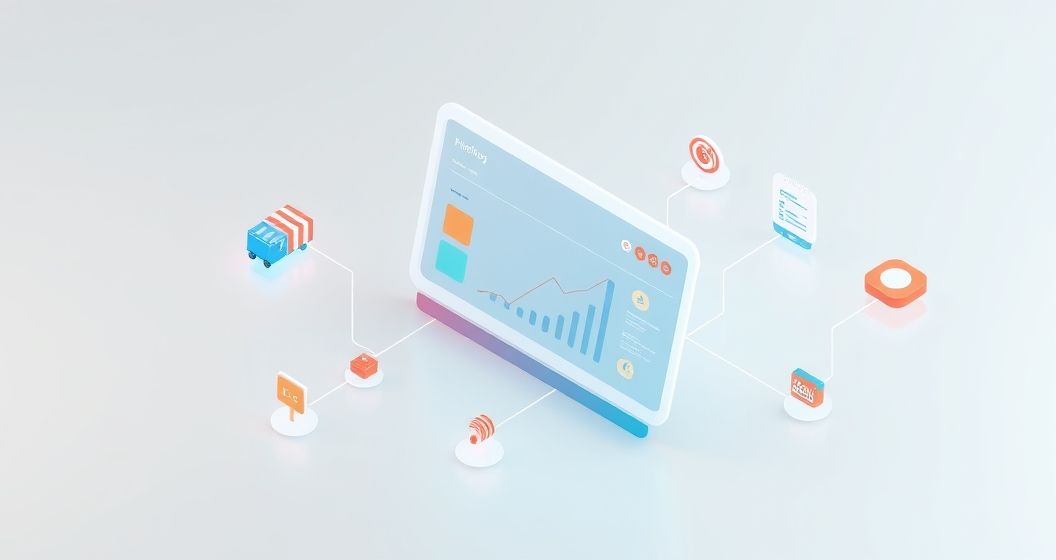Navigating the dynamic landscape of online retail demands efficiency and strategic resource allocation from Etsy sellers. Etsy integrations serve as powerful tools, designed to automate repetitive tasks, enhance operational accuracy, and expand a shop’s capabilities beyond the platform’s native features. These integrations can transform daily routines, freeing up valuable time for creativity and growth, rather than getting bogged down by administrative work. Understanding the various types of integrations available and how they benefit different aspects of an Etsy business is crucial for sustainable success and market competitiveness.
Understanding Etsy Integrations for Enhanced Selling
Etsy integrations refer to third-party applications or services that connect with an Etsy shop to extend its functionality. This connection allows for the seamless transfer of data, automation of workflows, and centralization of various business operations. For an Etsy seller, this means less manual data entry, fewer errors, and a more cohesive overview of their business performance. The primary goal of implementing effective Etsy integrations is to optimize efficiency, enabling sellers to manage inventory, process orders, handle shipping, and conduct accounting with greater ease and precision, ultimately fostering business growth.
Enhancing Inventory Management with Etsy Integrations
Accurate inventory management is a cornerstone of any successful e-commerce venture, especially for unique handmade or vintage items on Etsy. Etsy inventory management integration solutions synchronize stock levels across multiple sales channels, preventing dreaded oversells and ensuring customers always see up-to-date availability. These tools monitor product quantities in real-time, automatically adjusting listings as items are sold, whether on Etsy or another integrated platform. This automation saves considerable time and reduces the risk of disappointing customers due to stock inaccuracies, maintaining a professional shop image.
Beyond simple quantity tracking, advanced Etsy integrations for inventory can provide insights into best-selling products, identify slow-moving stock, and help forecast future demand. Some systems even offer variant-level tracking, crucial for items with multiple sizes, colors, or material options. By centralizing inventory data, sellers gain a comprehensive view of their entire product catalog, facilitating smarter purchasing decisions and minimizing carrying costs. The efficiency gained allows sellers to focus on creating new products rather than constantly counting stock.
Streamlining Order Fulfillment and Shipping Processes
Efficient order fulfillment and shipping are critical for customer satisfaction and repeat business on Etsy. Etsy shipping integration tools automate the entire process, from generating shipping labels to sending tracking notifications to customers. These integrations often connect with major shipping carriers, allowing sellers to compare rates, print labels in bulk, and schedule pickups directly from their integrated dashboard. This significantly reduces the manual effort involved in preparing packages and managing logistics, making the fulfillment process smoother and faster.
Furthermore, many Etsy integrations for shipping provide robust tracking capabilities, automatically updating customers with their order status, which enhances transparency and builds trust. Some solutions also offer features like address validation, ensuring delivery accuracy and minimizing costly shipping errors. For sellers handling a high volume of orders, the time and cost savings achieved through integrated shipping solutions are substantial, transforming a typically labor-intensive task into an efficient, automated workflow, ultimately improving the overall customer experience.
Automating Accounting and Financial Reporting
Managing finances is an essential, yet often time-consuming, aspect of running an Etsy shop. Etsy accounting integration simplifies bookkeeping by automatically syncing sales data, fees, and transaction details from Etsy directly into accounting software. This eliminates the need for manual data entry, significantly reducing the potential for human error and ensuring accurate financial records. Sellers can easily track income and expenses, reconcile accounts, and generate comprehensive financial reports with minimal effort, providing a clear picture of their business’s financial health.
These integrations are invaluable for tax preparation, as all relevant financial information is neatly organized and readily accessible. By automating these processes, sellers save countless hours that would otherwise be spent on tedious data entry and calculations. The ability to quickly generate profit and loss statements, balance sheets, and sales tax reports empowers Etsy sellers to make informed business decisions, optimize pricing strategies, and better plan for future investments, ensuring long-term financial stability and growth.
Exploring Print-on-Demand (POD) and Dropshipping Integrations
For Etsy sellers looking to expand their product offerings without the overhead of managing physical inventory, print-on-demand (POD) and dropshipping models offer compelling solutions. Etsy print-on-demand integration connects a seller’s shop with POD fulfillment services, allowing them to create custom designs on various products like t-shirts, mugs, or art prints. When a customer places an order, the integration automatically sends the design and order details to the POD provider, who then prints, packages, and ships the item directly to the customer. This enables a vast product catalog with minimal risk and upfront investment.
Similarly, Etsy dropshipping integration facilitates a business model where products are shipped directly from a third-party supplier to the customer. This approach eliminates the need for sellers to store or handle any physical products themselves. Both POD and dropshipping integrations automate the order fulfillment process, freeing sellers from inventory management, production, and shipping logistics. While profitability rates can vary based on product type, supplier costs, and competitive pricing, these integrations open doors to diverse product lines and scalable business models for creative entrepreneurs on Etsy, expanding market reach.
Integrating Etsy with Other E-commerce Platforms
Many successful online businesses operate across multiple e-commerce platforms to maximize their reach and diversify their sales channels. The ability to integrate Etsy with Shopify, for example, allows sellers to manage listings, orders, and inventory from a centralized dashboard. This multi-channel approach is beneficial for businesses seeking to leverage Etsy’s unique audience for handmade and vintage items, while simultaneously utilizing Shopify’s extensive customization and scalability for a broader product range or brand experience. Such integrations ensure consistency across all storefronts.
These platform integrations prevent discrepancies in inventory counts and customer data, providing a unified view of all sales activities. They streamline data flow, ensuring that an item sold on Etsy is automatically marked as out of stock on Shopify, and vice versa. This reduces administrative overhead and minimizes the risk of overselling, improving efficiency and customer satisfaction. While some integrations may incur monthly fees, the strategic benefits of expanded market presence and operational synchronization often far outweigh the investment, fostering significant business growth.
Selecting the Right Integration Tools for Your Etsy Shop
Choosing the appropriate Etsy integration tools requires careful consideration of a shop’s specific needs, budget, and growth aspirations. Sellers should evaluate potential integrations based on their core functionality, ease of use, customer support, and compatibility with existing workflows. It is essential to identify the most pressing pain points in current operations, whether it is inventory tracking, shipping logistics, or financial management, and then seek solutions that directly address those challenges. A thorough review of features and user feedback can provide valuable insights into an integration’s effectiveness.
Cost is another significant factor, with some integrations offering free tiers, while others operate on subscription models that vary based on features or transaction volume. Sellers should consider the return on investment (ROI) by assessing how much time and effort an integration will save versus its cost. Scalability is also crucial; the chosen tools should be able to grow with the business, accommodating increased sales volume and expanded product lines. Thoughtful selection ensures that Etsy integrations genuinely enhance operations without adding unnecessary complexity or expense, creating a robust and adaptable business infrastructure.
Maximizing Efficiency and Profitability with Strategic Etsy Integrations
Strategic implementation of Etsy integrations offers a clear path to maximizing efficiency and profitability for any seller. By automating routine tasks, sellers can significantly reduce the time spent on administrative duties, reallocating those hours to product development, marketing, or customer engagement. This shift allows for a more creative and strategic focus, driving innovation and improving overall business performance. The reduction in manual errors across inventory, order processing, and accounting directly contributes to cost savings and increased customer satisfaction, strengthening a brand’s reputation.
Furthermore, the data insights provided by integrated tools empower sellers to make more informed decisions about product sourcing, pricing, and marketing strategies. Understanding sales trends, inventory turnover, and financial performance at a glance enables proactive adjustments and optimizes resource allocation. The combined benefits of automation, accuracy, and insightful analytics create a resilient and scalable business model, positioning Etsy shops for sustained growth and enhanced profitability in a competitive online marketplace. Effective integration is not just about convenience; it is about building a smarter, more agile business.
Conclusion: Empowering Your Etsy Business for Future Success
Embracing Etsy integrations is a pivotal step for sellers aiming to optimize their operations and scale their businesses effectively. From automating inventory and streamlining shipping to simplifying accounting and enabling diverse business models like print-on-demand, these tools offer transformative benefits. By carefully selecting and implementing integrations that align with specific business needs, sellers can significantly enhance efficiency, reduce manual errors, and free up valuable time for creative pursuits. The strategic use of these powerful solutions empowers Etsy shop owners to build a more robust, competitive, and ultimately successful online presence, ensuring long-term growth and sustained profitability in the evolving e-commerce landscape.






